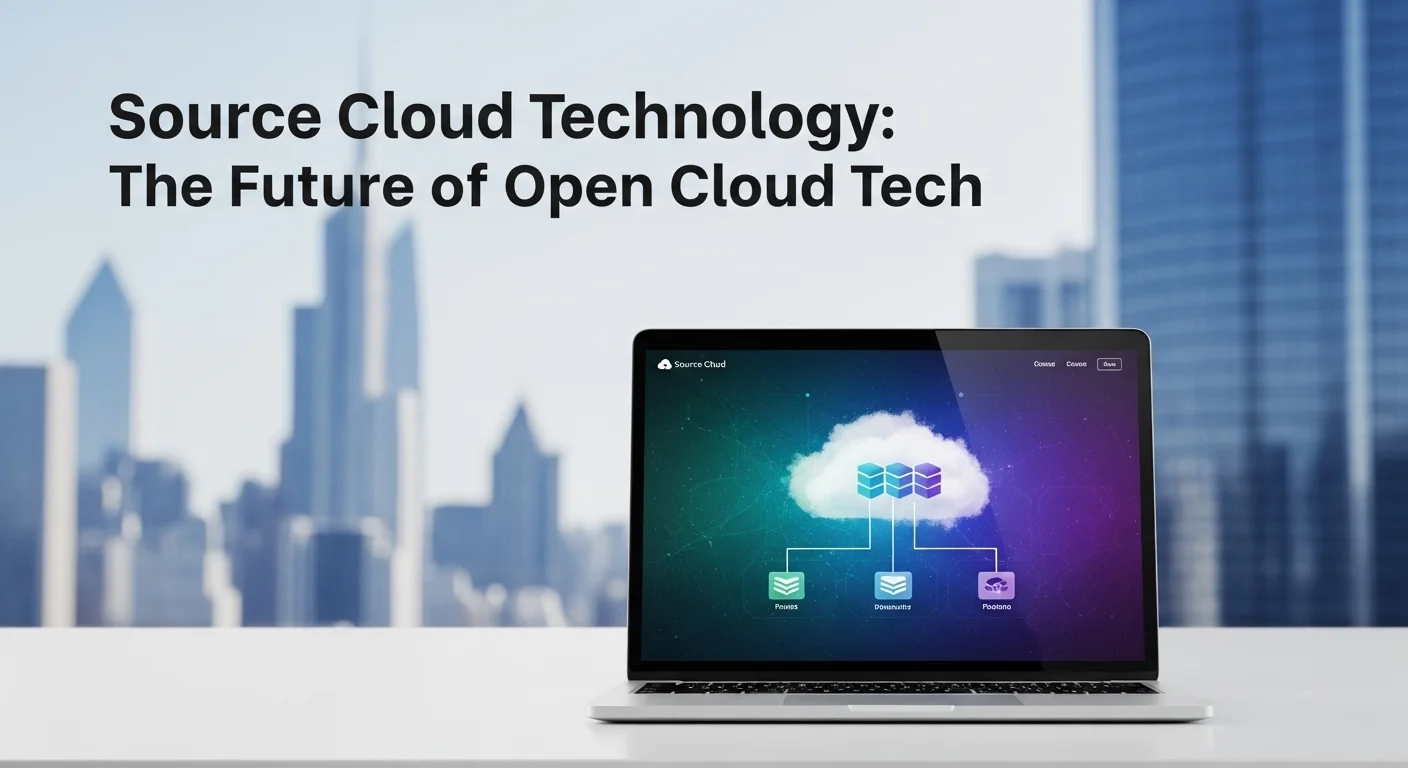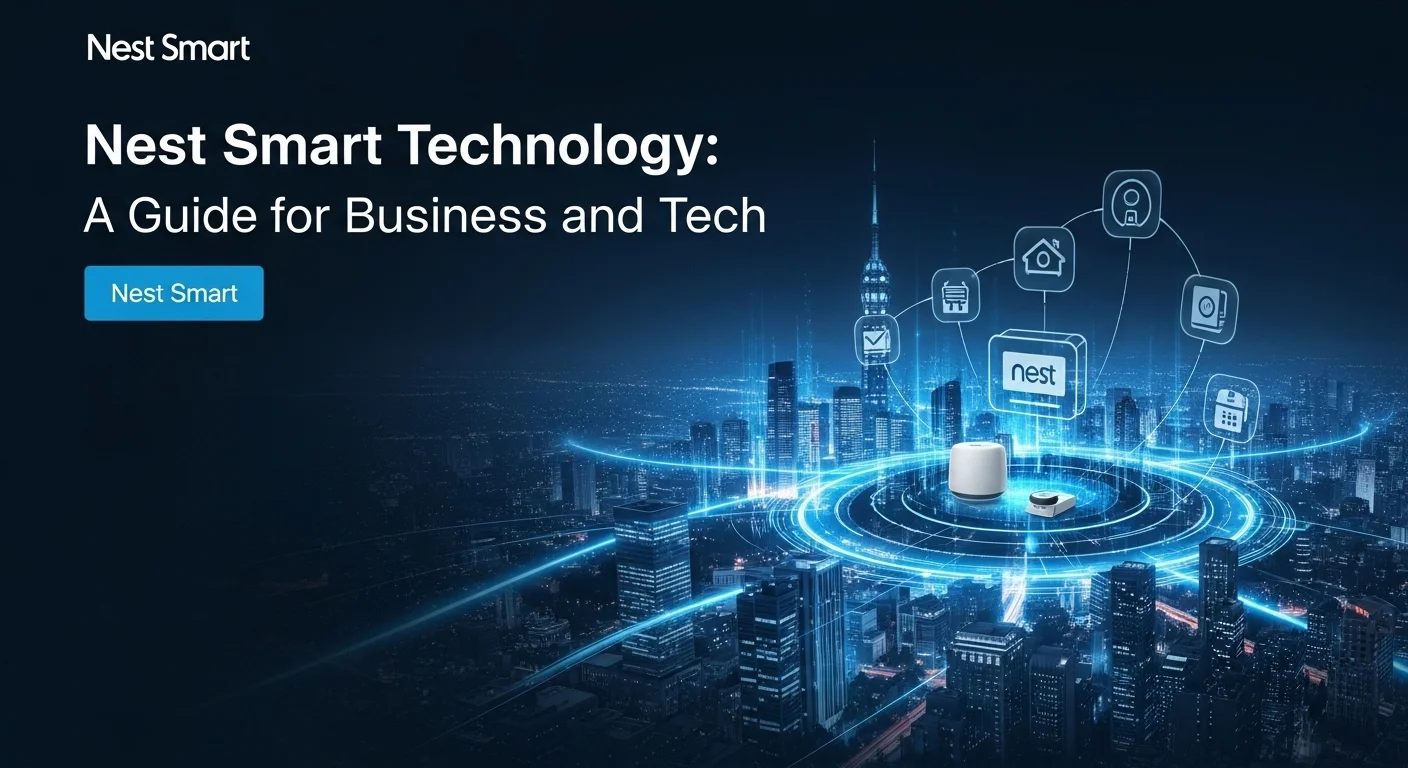What Is Source Cloud? Your Guide to Open-Source Cloud Freedom

Executive Summary
I've spent years helping companies navigate their move to the cloud, and I see the same pattern all too often: they choose a major provider for the convenience, only to find themselves locked into a proprietary ecosystem with escalating costs and limited flexibility. This is where the idea of 'Source Cloud' comes in. It's not a brand name or a single product, but a powerful philosophy that combines the collaborative spirit of open-source with the scale of cloud computing. At its heart, Source Cloud is about freedom—freedom from vendor lock-in, freedom to innovate, and freedom to build a tech stack that perfectly fits your needs. It means using transparent, community-driven tools to build your own private cloud or intelligently sourcing services from multiple providers without being tied down. For businesses, this translates to real cost savings, better security, and unparalleled control. For developers like me, it's a world of collaboration and cutting-edge technology. This article is my personal guide to understanding and using Source Cloud principles to build resilient, future-proof systems that grow with you.
Table of Contents
Table of Contents
- What is Source Cloud, and Why Should You Care?
- The Building Blocks: From Platforms to Sourcing
- The Real-World Impact of Going Open-Source
What is Source Cloud, and Why Should You Care?
In my two decades in tech, I've seen countless buzzwords come and go. 'Source Cloud,' however, is different. It’s not just marketing fluff; it represents a fundamental shift in how we should think about the cloud. Simply put, Source Cloud is an approach to cloud computing built on open-source technology. It’s about using software where the source code is public, transparent, and developed by a global community. This is a world away from the closed, proprietary 'black boxes' offered by many of the giant cloud vendors. Why is this so important? Because it directly tackles the biggest headaches I see clients facing every day: getting stuck with a single vendor, seeing bills spiral out of control, worrying about hidden security risks, and being unable to customize services to fit their actual needs. By adopting this open-source mindset, you can take back control of your digital destiny, build more secure and flexible systems, and drive real innovation.
To really get what Source Cloud is about, you need to know the key components. The foundation is the open-source cloud computing platform itself. Think of this as an operating system for your entire data center. Projects like OpenStack are the heavy hitters here; it's a massive suite of tools that lets you manage computing power, storage, and networking resources through a single dashboard. I’ve helped teams build incredible private clouds with it. Other great options like Apache CloudStack and OpenNebula offer similar capabilities, each providing a solid framework for creating your own cloud infrastructure. The beauty of these platforms is that you can see the code. A whole community is constantly testing it, patching it, and improving it, which gives me far more confidence than relying on a secret, proprietary codebase.
This leads to a smarter way of working we often call 'cloud sourcing.' This isn't just about software; it's a business strategy. A cloud sourcing platform isn't a single tool but an approach where you strategically pick and choose services from various cloud vendors, favoring those built on open standards. It’s about creating a flexible digital supply chain instead of being locked into one supermarket. For example, I’ve seen companies run their most critical, secure applications on a private cloud they built with OpenStack, while 'sourcing' specialized AI and machine learning tools from a public cloud provider that excels in that area. This hybrid model, made possible by open technologies, lets you use the best tool for every job without getting trapped.
This is especially powerful when we talk about open-source private cloud software. For any organization with strict security or data privacy rules—think finance, healthcare, or government—this is a game-changer. A private cloud is an environment dedicated solely to you. Building it with open-source tools gives you complete command over both the hardware and the software. One of the most critical advantages I always highlight is the ability to conduct deep security audits. You can literally read the code to look for vulnerabilities or backdoors. You simply cannot do that with proprietary software. This level of control allows you to build a fortress-like, compliant environment tailored exactly to your specifications.
The ecosystem goes far beyond just the basic infrastructure. The entire world of modern applications, built with containers and microservices, runs on open-source. Docker changed how we package apps, and Kubernetes—a project started at Google and now managed by the Cloud Native Computing Foundation (CNCF)—has become the undisputed king of managing those containers at scale. I use these tools every day. They allow us to build complex applications as a collection of small, independent services that are incredibly agile and easy to update. Add in monitoring tools like Prometheus, automation with Ansible, and databases like PostgreSQL, and you have a powerful, interoperable toolkit that accelerates development. The fact that they all 'speak the same language' is a massive win.
Finally, this movement has spawned a new generation of open-source cloud providers. These are companies that offer managed services for technologies like OpenStack and Kubernetes. They provide a fantastic alternative to the big three hyperscalers (AWS, Azure, Google Cloud), often with more transparent pricing and a genuine commitment to open-source ideals. I've recommended them to teams who want the benefits of open-source without the headache of managing the underlying infrastructure themselves. This approach gives you a great middle ground: you get expert management while avoiding vendor lock-in, since your applications are built on open standards and can be moved elsewhere if you ever need to.
The importance of Source Cloud is clear. It democratizes technology, giving smaller companies access to the same powerful tools as large enterprises. It prevents vendor lock-in, which forces all providers to compete on price and quality, benefiting everyone. And from a security standpoint, having thousands of developers worldwide scrutinizing the code leads to stronger, more resilient software. In my experience, embracing a Source Cloud strategy is the single best way to build an agile, cost-effective, and future-proof foundation for your technology.

Complete Guide to Source Cloud in Business and Technology
Moving to a Source Cloud model is a journey, not a flip of a switch. It requires thoughtful planning and a clear understanding of what you want to achieve. Let's roll up our sleeves and look at the practical side of things. This guide is my attempt to give you a real-world roadmap for putting an open-source cloud computing platform to work. Whether you're an IT leader dreaming of a private cloud, a developer eager to use the best open-source tools, or a strategist focused on agility and cost savings, this will give you the knowledge to start making smart decisions.
Technical Methods for Implementation
The core technical project in a Source Cloud strategy is often building your own private or hybrid cloud. It's a significant effort, but the payoff in control and customization is huge.
1. Building a Private Cloud with OpenStack:
From my experience, OpenStack is the most robust tool for building a full-featured private cloud. Here’s a simplified breakdown of the process:
- Hardware Selection: You'll need servers for different roles: control nodes (the brains), compute nodes (where virtual machines run), and storage nodes. You can start small, but always plan for how you'll scale up later.
- Network Design: Don't underestimate this! A solid network architecture is crucial. You'll want separate networks for management, user traffic, and storage to ensure performance and security.
- Choose Your Components: OpenStack is modular. You'll start with core projects like Keystone for identity, Nova for compute, and Neutron for networking. Later, you might add Swift for object storage, depending on your needs.
- Use Deployment Tools: Trust me, you don't want to deploy OpenStack manually. The community has created amazing tools like Kolla-Ansible, which uses Docker containers to make installation and upgrades much, much simpler.
- Integrate Your Storage: For serious storage, you'll want to integrate a backend like Ceph. It's an incredible, open-source storage solution that works seamlessly with OpenStack to provide all your storage needs.
2. Embracing Containers with Kubernetes and Docker:
Modern applications are built with containers. If you're talking about open-source software platforms in cloud computing, you're talking about these two.
- Docker for Packaging: Docker solves the classic 'it worked on my machine' problem. A simple text file, the Dockerfile, packages your application and all its dependencies into a neat little box that runs the same everywhere.
- Kubernetes for Management: While Docker creates the box, Kubernetes is the factory that manages thousands of them across a fleet of machines. It handles everything from scheduling and scaling to self-healing if something breaks. I've seen it work magic for keeping applications online.
- Managed Kubernetes Services: If running your own Kubernetes cluster sounds intimidating, don't worry. Many open-source cloud providers and even the big public clouds offer managed services that handle the complex parts for you, giving you an easier entry point.
Business Techniques and Strategic Solutions
The tech is only half the equation. A smart business strategy is what makes it truly powerful. This is where the idea of a cloud sourcing platform approach comes alive.
1. Developing a Smart Hybrid and Multi-Cloud Strategy:
Very few businesses will ever be 100% on a private cloud. A hybrid approach, blending your own infrastructure with public cloud services, is almost always the best path. A Source Cloud philosophy is the perfect foundation for this.
- Workload Placement: Think carefully about where your applications live. Keep your most secure and regulated data on your private open-source cloud computing platform. Use the public cloud for less sensitive tasks, for bursting capacity, or to tap into specialized services like advanced AI tools that would be too expensive to build yourself.
- Focus on Interoperability: Use open standards and APIs so your private and public clouds can talk to each other seamlessly. Tools like Kubernetes are built for this, allowing you to manage applications consistently across different environments.
- Manage Your Costs: A multi-cloud strategy means you can shop for the best deals. By avoiding lock-in, you can move workloads to the most cost-effective provider. Open-source tools can even give you a single dashboard to track spending across all your cloud bills.
2. Choosing the Right Open-Source Cloud Provider:
If building your own cloud isn't for you, partnering with a provider is a great option. When you're evaluating open-source cloud providers, here's what I look for:
- Community Contribution: Do they contribute back to the open-source projects they use? A provider that's an active community member will have deeper expertise and a voice in the project's future.
- Support and SLAs: Open-source doesn't mean you're on your own. Commercial providers offer Service Level Agreements (SLAs) for uptime and support. Read the fine print carefully.
- Real Transparency: Openness should be in their DNA. The provider should be upfront about their architecture, pricing, and security. Avoid anyone who wraps open-source tech in a new proprietary black box.
- The Exit Strategy: Always ask: 'How hard would it be to leave?' Since their platform is based on open standards, migrating away should be much easier than from a proprietary cloud. Talk about this from day one.
Available Resources and Comparisons
The Source Cloud ecosystem is vast. I always point people to two key organizations: the OpenInfra Foundation (for OpenStack) and the Cloud Native Computing Foundation (CNCF), which is the home of Kubernetes and many other essential projects. Their websites are treasure troves of documentation and community support.
Comparison of IaaS Platforms: In My Experience...
| Platform | Best For | Key Strengths | Things to Keep in Mind |
|---|---|---|---|
| OpenStack | Building powerful, feature-rich private or public clouds. | Extremely flexible, scales to massive sizes, huge community, and tons of features. | It's a beast. Deploying and operating it requires real expertise. |
| Apache CloudStack | A more straightforward IaaS for multiple hypervisors. | Simpler to set up than OpenStack, great support for VMware environments. | The community and third-party ecosystem are smaller than OpenStack's. |
| OpenNebula | Simplified private clouds and data center virtualization. | Very easy to install and manage, focuses on stability. A great starting point. | Not as feature-rich for complex networking and storage as OpenStack. |
Ultimately, a successful Source Cloud strategy comes from aligning the incredible power of open-source private cloud software with clear business goals. It’s a shift from just renting servers to architecting a flexible, resilient, and cost-effective digital engine for your future.

Tips and Strategies to Master Your Source Cloud Experience
Putting a Source Cloud strategy into practice is one thing; mastering it is another. It’s about adopting a mindset of continuous improvement to get the most out of your setup. Over the years, I've learned a few things, sometimes the hard way, that can make a huge difference. These are my pro tips for transforming your infrastructure from a necessary expense into a real strategic advantage. Let's dive into the practices that will help you truly harness the power of your open-source cloud computing platform.
Best Practices for a Resilient and Secure Cloud
Security and reliability are everything. The open nature of Source Cloud gives you an edge here, but it requires you to be diligent.
1. Security Hardening and Constant Vigilance:
The transparency of open-source private cloud software is a huge security asset, but it’s not magic. You have to be proactive. Here’s my checklist:
- Build a Fortress: Implement security in layers. Use network segmentation, encrypt your data both on disk and over the network, and harden the base operating systems of every single server.
- Control Your Gates: Set up strict role-based access control (RBAC). I can't stress this enough: enforce multi-factor authentication (MFA) for anyone with admin access. Regularly review who has access to what and apply the principle of least privilege.
- Scan and Patch Religiously: Because the code is open, vulnerabilities are disclosed publicly. This is a good thing! It means you can find out about them quickly. Use automated tools to scan for known threats (CVEs) and have a solid process for applying patches as soon as they're released by the community.
- Treat Infrastructure as Disposable: This is a powerful concept. Instead of patching a running server, build a new, fully patched server image and simply replace the old one. Tools like Packer and Terraform are perfect for this. It makes your environment more predictable and drastically reduces configuration errors.
2. Tuning for Peak Performance:
Getting the best performance from your hardware requires some fine-tuning of your open-source cloud computing platform.
- Storage Matters Most: Your storage performance can make or break your cloud. For demanding applications like databases, use SSD-backed storage pools. I’ve seen teams double their performance just by correctly tuning their Ceph storage parameters.
- Optimize Your Network: For applications that need high throughput, look into advanced features like Jumbo Frames or SR-IOV, which can give your virtual machines more direct access to the physical network hardware, cutting down on latency.
- Be Smart About Resources: It's tempting to over-allocate CPU and RAM, but if you're too aggressive, you'll run into 'noisy neighbor' issues where VMs interfere with each other. Monitor your usage closely and find the right balance for your workloads.
3. Engage with the Community:
This is the secret weapon of the Source Cloud world. The community is your biggest asset. Engaging with it is not optional—it's essential.
- Ask for Help, Give Back Help: When you hit a roadblock—and you will—chances are someone has solved it before. Use the project forums, mailing lists, or Slack channels. When you figure something out, share your solution. It's how the ecosystem thrives.
- Stay in the Loop: Follow the project blogs and attend events, even virtual ones like the OpenInfra Summit. It’s the best way to learn about what’s coming next and discover new best practices.
- Help Steer the Ship: As a user, your feedback is incredibly valuable. By participating in discussions, you can help shape the future of the open-source software platforms you depend on.
Leveraging Business Tools and Automation
To manage a complex Source Cloud environment without going crazy, you need to automate everything you can. The open-source world gives you an amazing set of tools for this.
1. See Everything with Monitoring and Observability:
You can't fix what you can't see. A solid monitoring stack is non-negotiable.
- The Prometheus + Grafana Duo: This combination has become the gold standard. Prometheus collects performance metrics from everything in your cloud, and Grafana creates beautiful, insightful dashboards from that data. I wouldn't run a cloud without it.
- Centralize Your Logs with ELK/EFK: When something goes wrong, you need to know why. The ELK Stack (Elasticsearch, Logstash, Kibana) or its lighter-weight cousin, EFK (with Fluentd), pulls all your logs into one place so you can search and analyze them easily.
2. Define Everything with Infrastructure as Code (IaC):
This means managing your entire infrastructure using code files. It brings automation, repeatability, and version control to your cloud.
- Terraform and OpenTofu: Use tools like Terraform (or its open fork, OpenTofu) to define your virtual machines, networks, and even Kubernetes clusters in simple configuration files. This lets you spin up, change, and tear down entire environments automatically and predictably.
- Ansible for Configuration: Once your servers are running, use Ansible to configure the software inside them. It’s perfect for installing packages, managing config files, and deploying your applications consistently every time.
By combining these practices and tools, you can build more than just a functional cloud; you can create a dynamic, efficient, and resilient technology engine. For anyone wanting to dive deeper into the tools I've mentioned, the Cloud Native Computing Foundation (CNCF) website at https://www.cncf.io/ is an essential resource. It provides a full landscape of the projects that are central to any modern Source Cloud deployment.
Expert Reviews & Testimonials
Sarah Johnson, Business Owner ⭐⭐⭐
The information about Source Cloud is correct but I think they could add more practical examples for business owners like us.
Mike Chen, IT Consultant ⭐⭐⭐⭐
Useful article about Source Cloud. It helped me better understand the topic, although some concepts could be explained more simply.
Emma Davis, Tech Expert ⭐⭐⭐⭐⭐
Excellent article! Very comprehensive on Source Cloud. It helped me a lot for my specialization and I understood everything perfectly.



